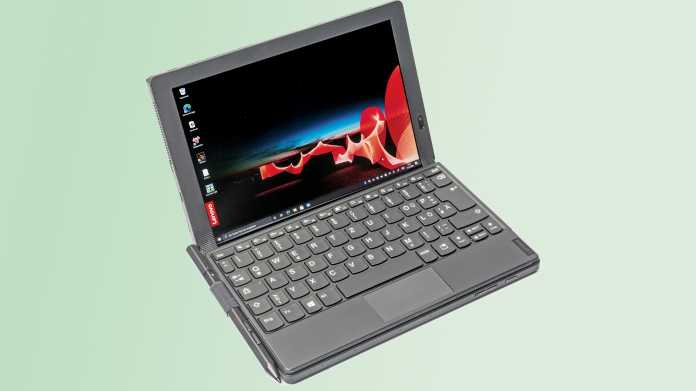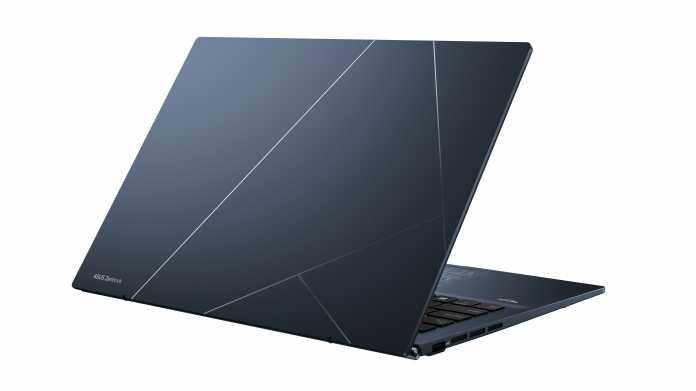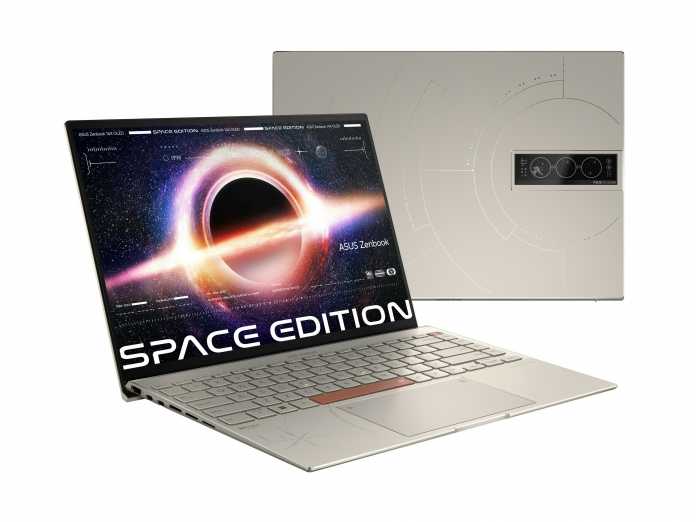Exactly two years ago, a number of manufacturers showed their interpretations of dual-screen or folding devices at CES 2020, which should bring the worlds of notebooks and tablets even closer together. Apart from Lenovo’s ThinkPad X1 Fold, which has actually been available since the end of 2020, none of them has reached series production – in the case of the Surface Neo, a device that was promised as a product was even crushed. Asus is now preparing to compete with the ThinkPad X1 Fold. The ZenBook Fold is strongly reminiscent of his idea of having a small notebook or a large tablet in front of you, depending on the situation.

The ZenBook 17 Fold can be used in many ways.
(Image: Asus)
However, Asus addresses exactly the biggest point of criticism of the X1 Fold, namely its use as a notebook: Instead of a tiny netbook format, the ZenBook Fold still offers a compact but everyday 12.5-inch size (even in the high 3: 2- Aspect ratio). This is not only important for the display of images: the width of the screen always determines the space available for the keyboard on every notebook. With the ZenBook Fold, it is sufficient to accommodate a Bluetooth keyboard with normal-sized keys and a common layout – while the reduced X1-Fold keyboard requires a lot of getting used to and finger acrobatics.
Giant tablet
The practical notebook size certainly has an impact on its use as a tablet: Then the screen is twice as large, which means a full 17-inch diagonal in 4: 3 format. No other tablets reach these dimensions, but at best only a few hybrid notebooks with 360-degree hinges. For those on the go, the backpack must also have the appropriate dimensions, while the ZenBook Fold is folded to the size and thickness of a subnotebook. It is, however, much heavier: you have to carry around 2 kilograms, while many 13.3-inch notebooks weigh less than 1.3 kilograms.
Asus developed the ZenBook Fold in cooperation with two other companies: The foldable OLED comes from BOE, while Intel supplies the processor. Asus did not yet want which CPU it was exactly; it should be one of the twelfth generation of Core i. More details should be available around the middle of the year – this also applies to the price. For comparison: Lenovo has called for over 3000 euros for the smaller ThinkPad X1 Fold.

With OLED …
If you are only looking for a brightly colored OLED display, but are otherwise not averse to a classic notebook design, you will find the same in the 2022 ZenBook 14 in 16:10 format with 90 Hz support (2880 × 1800 pixels). Asus uses either processors of the twelfth Core i generation or Ryzen CPUs. AMD models have a black case, Intel versions come in dark blue or gray-green.

The 2022 ZenBooks are getting a new design.
(Image: Asus)
The 2022 ZenBook 14 has a new case design. At the rear end, a visually striking cylinder runs across the entire width; the hinges are part of it. The concentric brushing that previously adorned the outside of the lid has disappeared; instead, a few lines are drawn asymmetrically across the surface.
Prices start at 1000 euros; the first devices are to be delivered in the second quarter.

… into space
Asus will also release a special edition called ZenBook 14X Space Edition. It uses the same 14-inch OLED screen, but has a differently designed body in which more powerful Intel processors up to the Core i9-12900H are used. By default it is slowed down to 35 watts, but if you wish you can also use it with a full 45 watts.

The ZenBook 14X Space Edition has a monochrome additional display on the outside of the lid.
(Image: Asus)
The real specialty, however, is a small, monochrome second display on the outside of the lid, which Asus calls ZenVision. Animated status information such as the time or battery level can be displayed on it, as well as texts or individual labels.
The case was designed based on the badges that were attached to space probes such as Voyager. The real reminiscence, however, is the MIR space station, in which an Asus notebook was used in space for the first time in 1997/1998. Asus also states that in addition to standard MIL-STD-810H tests, the notebook has also been certified as SMC-S-016A, which is specifically designed for space hardware. The notebook should work in the extended temperature range of -24 ° C to +61 ° C.
The ZenBook 14X Space Edition will also be available in the second quarter at prices starting at 1400 euros.
(mue)

